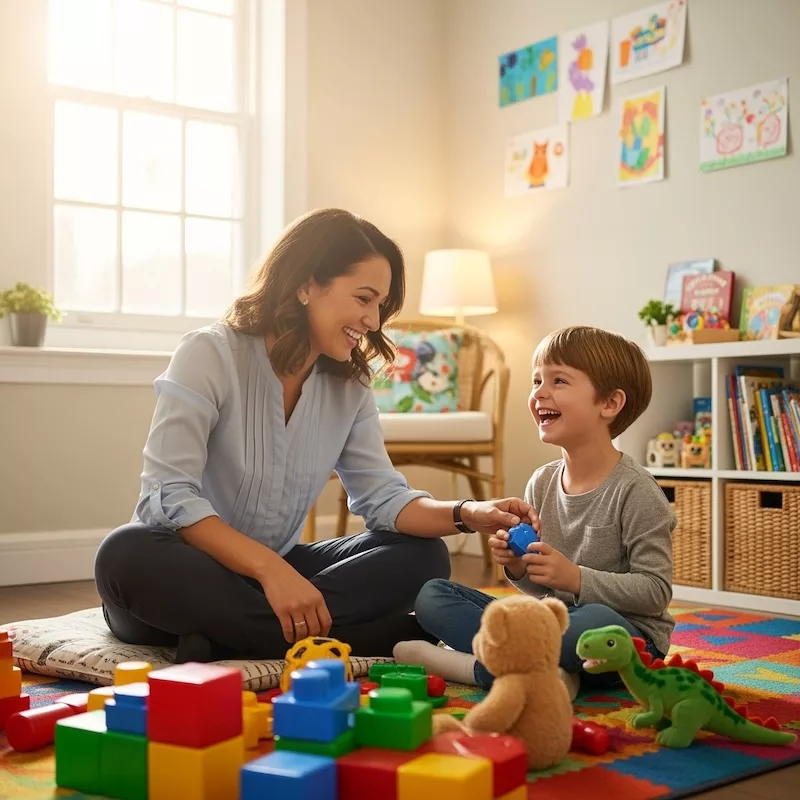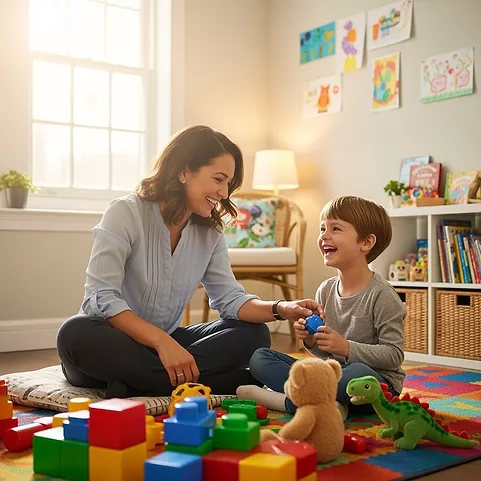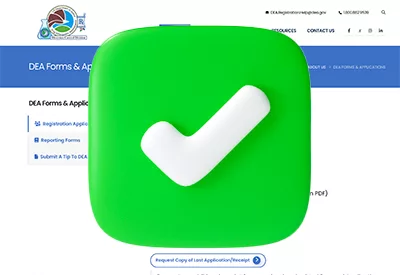For years, autism care has centered on one model, but that’s changing. The American Academy of Child and Adolescent Psychiatry just redefined what evidence-based care really means. This shift could transform how we support children and families.
Published On: 11/17/2025
Duration: 24 minutes, 07 seconds
Transcript:
JOSH FEDER: Welcome to the podcast. I'm Dr. Josh Feder, the editor-in-chief of the Carlat Child Psychiatry Report, and part of the growing decades-old community of providers who've been researching and implementing both developmental relationship-based and naturalistic developmental behavioral approaches for autism care that we'll be talking about today.
MARA GOVERMAN: And I'm Mara Goverman, a licensed clinical social worker in Southern California with a private practice and an avid reader of the Carlat Psychiatry Reports.
JOSH FEDER: Today, we're discussing a landmark policy statement from the American Academy of Child and Adolescent Psychiatry, AACAP, on expanding access to care for the autism community. This is a momentous shift in how we think about interventions for autism and intellectual disabilities.
MARA GOVERMAN: That's right. The statement identifies not only the longstanding use of applied behavioral analysis, ABA, but explicitly calls out two other intervention approaches, developmental relationship-based interventions, DRBI, and naturalistic developmental behavioral interventions, NDBI. It asks clinicians, payers, and policymakers to embrace a broader range of evidence-based care.
JOSH FEDER: Today, we'll unpack what that means for clinicians, how to incorporate this into your informed consent process, how to help families navigate referral options, and how the research supports these modes of intervention. We'll also highlight key findings from the 2020 meta-analysis known as Project AIM—Autism Intervention Meta-Analysis—for studies of young children by Sandbank and colleagues.
MARA GOVERMAN: To set the stage, what do we mean by evidence-based care? According to the US Institute of Medicine, evidence-based care integrates three core elements: the best available research evidence, the clinician's clinical expertise and judgment, and the patient's values, preferences, and culture. All of these must inform our decisions.
JOSH FEDER: In practical terms, we're talking about kids and families. This means when we recommend an intervention for an autistic child or someone with intellectual disabilities, we combine high-quality research of all kinds, not merely randomized controlled trials, but all the research that's out there, professional judgment, especially with our own experience with different families and different approaches, and the family's voice—their culture, priorities, and goals—to arrive at the right care for that child.
MARA GOVERMAN: AACAP is saying that we must do this with full transparency by informing families about all evidence-based options, not just ABA, and by encouraging payers and systems to recognize and support these options so families can truly access them.
JOSH FEDER: Well, let's talk about research evidence for DRBI and NDBI, Mara?
MARA GOVERMAN: DRBI emphasizes a child's developmental framework of care, utilizing the child's motivation for social engagement and natural interactions. Often in everyday settings, therapists and caregivers follow the child's lead to promote reciprocal communication and engagement. These approaches embrace the child's individual differences, their neurodivergence, and helps families to understand and connect with their child. These DRBI include programs such as Greenspan and Wieder's DIR/Floortime, Solomon's Play Project, Greenspan’s program, and Prizant’s SCERTS program.
JOSH FEDER: NDBI, on the other hand, combines behavioral principles with developmental strategies, teaching and rewarding skills through play, shared routines, and meaningful interactions. Programs like the Early Start Denver Model (ESDM) and Project Impact are well-known NDBIs.
MARA GOVERMAN: The key meta-analysis here is Project AIM. Reviewing over 6,000 participants and 1,600 effect sizes, they found that when restricted to high-quality randomized controlled trials, developmental and NDBI interventions retained robust positive effect sizes. This is despite all the ABA research. Check out our Carlat podcast with Dr. Sandbank in August 2020.
JOSH FEDER: Yeah, and that was based on an interview we had with Dr. Sandbank that appeared in our April/May/June issue of the Carlat Child Psychiatry Report in 2021. It's actually a handy little grid comparing ABA, NDBIs, and DRBIs, so people might really like that. The takeaway is that DRBI and NDBI meet the threshold for evidence-based care. They are effective, developmentally informed, attuned, and important to ethical science-based care planning. So Mara and I have been working in the DRBI world for decades now. I was trained, actually, in traditional ABA at the beginning of my career. I left it in the early 1990s and haven't really looked back. I've certainly visited lots of programs where kids get ABA, and I see some families who have not really had a choice, and ABA hasn't worked out, so they've found the DRBIs and sometimes the NDBIs. The NDBI Project Impact became the standard for early intervention here, where we live in San Diego, a number of years ago. So almost every kid gets that now, just for starters, and some of them end up in ABA programs after that, and some of them end up in developmental programs. So we'll talk a little bit more about what's a good fit for a family, a little bit later on, but first, let's talk about the implications for informed consent and clinical practice after that.
MARA GOVERMAN: Clinicians can use the AACAP policy statement to enhance informed consent and shared decision making with families. And here's how.
JOSH FEDER: Expand the menu of discussed options. Include DRBI, NDBI, and ABA when discussing intervention models along with research evidence, delivery format, and the fit with family goals.
MARA GOVERMAN: Use shared decision making, educate families about each model, its evidence, benefits, and limitations. Ensure that families understand their options and know that they have choices that they can base on their own sense of what might be a good fit for them.
JOSH FEDER: Document the process. Note which interventions were discussed and how the family's values and circumstances informed the decision. So here it is, for instance: a family that's interested in connecting and growing through interactions might prefer a DRBI, while a family focused on having the child learn and practice specific skills and receive didactic information might prefer traditional ABA.
MARA GOVERMAN: Advocate for access. Reference the AACAP policy when insurers restrict coverage. It explicitly calls for covering the full continuum of evidence-based interventions.
JOSH FEDER: And we'll include a link to that policy in our show notes. Monitor and adapt. Track outcomes and adjust care plans collaboratively based on progress and feedback. Clinicians should encourage families to verify that programs use established DRBI or NDBI models such as DIR/Floortime, PACT, SCERTS, Responsive Teaching, BISC, Project Impact, JASPER, or ESDM, and that providers monitor treatment fidelity and integrate caregiver coaching. So, we've seen good programs and not-so-good programs across all of these over the years, and of interest, the behaviorists have had a board to look at quality forever, it seems like, for the BCBAs and the RBTs. For the developmental relationship-based crowd, we're developing an independent board called the Developmental Approaches Certification Board to ensure quality as these approaches become more and more prevalent. For the naturalistic developmental behavioral crowd, they actually identify with the ABA people, so they use the existing board.
MARA GOVERMAN: For all of the clinicians that are listening out there, I would suggest that you have an understanding of all these different approaches that we're discussing today and be mindful of the family's cultural background, and which fits best, because one size does not fit all.
JOSH FEDER: It's revolutionary in that it's really at the center of informed consent. It means really that when we're working with families and talking with them about options for care, we all need to now include, in addition to what people usually include, which is applied behavioral analysis, we need to include this idea of agency in autism. When we talk about psychological agency, we're really talking about the ability of a person to choose their own direction for their life, right? Do they have choices in what they want to do? And one of the critiques of traditional and, actually, the naturalistic developmental behavioral ABA approaches is that other people are choosing the goals for the child. Whereas in the developmental approaches, they are centered on what we perceive to be the child or teen or young adult, whoever it is, and what their desires are. The great example for me is a case I had of a young adult who was in a program where they were being asked to sort silverware, and it was in their care plan for over a decade, that that's what they were supposed to do because it was felt that the person was able to do that, and they ought to be working. And so this person was fighting against that. He did not want to sort silverware. Despite whatever medication people put him on, he would not sort silverware, and he would spit at people, and he would throw things at them. What he kept doing is he kept picking things off the floor, and they said, well, that's not appropriate; he shouldn't pick things off the floor; that's dirty, you need to sort silverware. He eventually gets to my office. He's on all these medications, and it may seem sort of silly, but to me, it just seemed that he didn't want to sort silverware, but he wanted to pick things up. And we ended up taking a walk in my neighborhood, and he wanted to pick things up. So we got a bag that he could put them in, and he picked things up. And what they ended up doing with him at his program was that he wanted to pick things up. There was plenty to pick up that needed to be picked up. He could do it with gloves if necessary. He was very happy doing that. It was very productive. It was outside in the sunshine. It wasn't in a room sorting things that he had been forced to do for a decade, and by the way, less medication. No more spitting. No more throwing. No more violence. Why? Because we're following his agency. So, Mara, I don't know if you have other thoughts or comments about this idea of agency, but it's one of the pillars of the developmental approaches and one of the reasons why I think it's so important that we include developmental approaches in informed consent. It's one of the things that the autism community, the people who can communicate, have been clamoring for for now decades.
MARA GOVERMAN: You know, I think back to one of the seminal moments in reading the Greenspan Reader book about Dr. Greenspan getting on the floor and joining the child who was playing with cars and playing with the carpet and picking things up, and joining them in their area of interest. And that connection—that what that person was doing mattered and that they had value—created a world of joining and “me and you”, and that's basically what you're talking about, that we are trying to create a human being who feels heard and understood, and the quality of the engagement and the interest becomes so much more robust. And generally, what follows along with that is a reduction in aggression and defiance because that person feels invited into the world.
JOSH FEDER: While the naturalistic developmental behavioral approaches try to kind of split the difference between these developmental approaches and the more structured traditional applied behavioral analysis approaches, they'll give kids choices. However, the goals are really decided by others, like how many words the person should say or which words we're working on, or things like that. Whereas again, the developmental approaches will build on where the child is, build their strengths, and the same kinds of concepts, words, and ideas naturally come into the interaction when we're trying to help them be who they want to be. So, for instance, if you're trying to teach a kid prepositions—in, out, under, whatever—if instead of giving them a choice of whether they want something in or out of a box, that's a nice change from being commanded to put something in a box ten times over. I think it's an advantage because you're giving them a choice: do you want it in or out of the box? That's nice, but wouldn't we rather be taking whatever the child's doing—maybe playing with their favorite car or something like that—and it's running around things, and oh my goodness, it went into that tunnel. Is it going to come out? Where is it? It's more naturally part of the interaction, and so it's connected in a way that's emotionally meaningful to the child. I think they're more likely to learn it as a meaningful thing. If you're just learning commands of “put in” or “in versus out,” it's almost isolated from the reality of the child. Well, put it into the world of the child. How do we all learn about the things we love? Well, we usually learn in context. So that's kind of what I'm getting at with that. And there's been a growing cultural pressure within the autism community for this kind of learning. And so again, the fact that ACAP has recognized that this is evidence-based care and that it should be among the choices that families have is a huge advance.
MARA GOVERMAN: I just want to add, as a clinician with boots on the ground, one of the most exciting things for us to see is when a parent will join a child in something that they are interested in. Like that parent who wrote that book about connecting with their child from all the Disney characters. And the excitement and joy that the parent-child dyad experiences, of really feeling like they have connected with their child, is invaluable. It's a price above rubies when I look at that.
JOSH FEDER: The other thing that comes up with the DRBIs is people seem to have ideas about, well, who are these for, these developmental approaches? Are they really for just the zero-to-three crowd? Early intervention, do some play before you sit down to do your work at the table with ABA? Are they for people who have only been very severely impacted and haven't responded to traditional ABA? Are they only for people who have relatively fewer support needs, and so they're able to play in ways that kids with higher support needs are unable? And it's all a misnomer because what we're really talking about are fundamental ways of human interaction that include being regulated, connected in some way to the people around you, and engaged in a meaningful flow of interaction that can be as simple or as abstract as where the child is, with the parent or other caregiver helping support movement toward more complex or abstract kinds of problem-solving and interaction. So it runs across the board, just like the applied behavioral analysis people would say ABA runs pretty much across the board. So, it's important that people understand that these approaches are broad in their reach.
MARA GOVERMAN: I would even venture to say that in the treatment room—riffing off Selma Fraiberg's “Ghosts in the Nursery”—the principles that you are suggesting are in the treatment room for neurotypicals as well. It really adds a great deal to the therapeutic process.
JOSH FEDER: Yeah, in fact, Greenspan, who is one of the founders of the DIR/Floortime version of a developmental relationship-based approach—and it's one of the most comprehensive styles; Greenspan and Wieder came up with this—but Greenspan wrote a book called Developmentally Based Psychotherapy that really lays out how these principles can and are often embedded in everyday psychotherapy, meaning that you're paying attention first to whether the person is regulated, connected in a flow of interaction. And if you're doing that, you're getting more toward problem-solving in a manner that can help with anxiety and depression and PTSD, OCD—almost anything you're thinking of. That doesn't necessarily supplant the other techniques of other approaches, including dialectical behavioral therapy or acceptance and commitment therapy, or even cognitive behavioral therapies, but it does give a slant to them. And for example, trauma-focused cognitive behavioral therapy is very useful for a discrete traumatic event that happens to, say, a child, or teen, or really anyone. But many times, things are more complex than that. Not only were you hurt, but maybe your parent was hurt. The relationship remains a really important piece of treatment, and if you are more rigid in terms of your behavioral views of trauma-focused cognitive behavioral therapy, you miss that part, which is kind of an underlying explanation for why it's harder to treat. And so, paying attention to the relationship and being a responsive caregiver, as opposed to somebody who's more focused on just the specific cognitions and behaviors that are associated with the emotions, you're going to get further in these cases. Just getting back to the issue of who this is for, ironically, research is showing us that we actually need to focus more of our time and effort on people with fewer support needs. Lots of times, people will say, Well, gee, they're doing pretty well, we don't have to put as many hours in, but if what you're trying to do is help somebody take the leap from functioning pretty well to being in the workforce and becoming a taxpayer, which is kind of a goal for society, a lot of times, you need more, not less help, becoming able to live as an octagonal peg trying to fit into round holes, right? So, that's something we need to be mindful of, but one of the last things I really want to be paying attention to is scalability. So, the developmental relationship-based approaches, traditionally, have been harder to scale. If you're doing DIR/Floortime, you've got two or three different therapists, master's-level people, a couple of hours each per week. That's expensive. That's hard to do. It's hard to get it paid for. Well, now payers are going to need to be paying for the care, but even so, it's going to be pretty difficult to find practitioners to be available. And it's going to be expensive if you're doing it in that model. One of the things that some companies and shops are doing is trying to figure out how to make this scalable, and many people have found very scalable, streamlined versions of DRBIs that are incredibly effective. And probably the best example I've got is Rick Solomon's Play Project, which he reported on back over a decade ago, talking about how four hours a month added to usual care, parent guidance, was associated with a relative drop in ADOS symptom scores—one or two full levels, from severe to moderate or moderate to mild levels on an ADOS. So these are powerful approaches, and they can be scaled. Well, to summarize, AACAP's new statement broadens autism care to include DRBI and NDBI alongside ABA.
MARA GOVERMAN: Evidence from Project AIM supports developmental and relationship-based models as robustly effective.
JOSH FEDER: Informed consent should reflect the Institute of Medicine's full definition of evidence-based care: all the research and clinical judgment, and the family's culture and values.
MARA GOVERMAN: Clinicians should inform families about all effective options and advocate for equitable coverage. And that means as providers, our ethical duty is to ensure families are fully informed and empowered to choose from the full spectrum of science-supported care.
JOSH FEDER: Thank you, Mara, and thank you all for listening. Links to the AACAP statement, Project AIM article, and national referral resources are in the show notes. Until next time, stay informed and keep working toward compassionate, evidence-based, family-centered care.
MARA GOVERMAN: And if you found this episode valuable, which we hope you did, please share it with others who need to hear this message.
JOSH FEDER: Everything from Carlat Publishing is independently researched and produced. There's no funding from the pharmaceutical industry.
MARA GOVERMAN: The newsletters and books we produce depend entirely on reader support. There are no ads. And our authors don't receive industry funding. That helps us bring you unbiased information that you can trust.
JOSH FEDER: Thanks to all of you for tuning into this episode, and again, like Mara said, if you found this discussion helpful, subscribe to more episodes on mental health and psychiatric care and tell your friends. Until next time, if you look for good things, more good can happen. Take care.
__________
The Carlat CME Institute is accredited by the ACCME to provide continuing medical education for physicians. Carlat CME Institute maintains responsibility for this program and its content. Carlat CME Institute designates this enduring material educational activity for a maximum of one quarter (.25) AMA PRA Category 1 CreditsTM. Physicians or psychologists should claim credit commensurate only with the extent of their participation in the activity.


_-The-Breakthrough-Antipsychotic-That-Could-Change-Everything.webp?t=1729528747)



